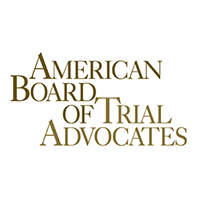What is “Negligence”?

The process of proving negligence is the cornerstone of personal injury law. But what the heck does “negligence” actually mean? In law school, we spend weeks on this topic in a first-year class known as “torts.” We are taught that negligence is the failure to act as a “reasonable person” under the same or similar circumstances. But who is this mythical “reasonable person?” That is often a question left to a jury of our peers to decide. But there are some general concepts that can help us learn what this “reasonable person” might do or might not do.
First, a reasonable person follows the existing laws. They obey the Rules of the Road of RCW 46.61 when driving a motor vehicle or bicycle. They are careful when engaging in any risky behavior. They seek to behave in professional settings in a manner that complies with ethical rules and established norms for their profession. A reasonable person acts when it would be unconscionable to do nothing. They protect the vulnerable when they have a special and close relationship with the vulnerable. In the State of Washington, our Revised Code of Washington sets out many of these standards as laws. But many standards are also created by habit, routine or accepted practice in industry journals or publications. Sometimes, especially in medical malpractice cases, expert witnesses are necessary to tell us the applicable standard
Proving negligence in the State of Washington requires first a showing that the defendant owed a “duty of care” to the injured person. In other words, did they need to be careful in this situation? If you are driving a car, for instance, you owe a duty to all other drivers on the roadways to drive carefully, maintain lookout and follow the laws. If you are a general contractor on a construction site, you owe a duty of general site safety to all workers. If you are a physician, you owe a duty to your patients to comply with accepted “standards of care” in your area of medical specialty. Most of us walk around owing duties every day as we work, drive and live life. We accept these duties and, most of us, are careful in carrying them out—fully aware of the risks if we fail to do so.
Secondly, there must be a showing that if there was a duty, it was breached—that is, broken by the party being sued. If the duty was breached, then there is liability.
Thirdly, there must be proof that damages (that is, injures) followed from the breach. This element is known as causation. Causation can be tricky, and sometimes this is where the defendant (that is, the party being sued) puts all its eggs. Suppose, for example, the defendant admits running a red light and crashing into the victim’s car. And suppose the victim says he hurt his shoulder and needs a surgery But also suppose that the victim already had shoulder problems. In that circumstance, the bad driver might admit he made a mistake, but he may say that he did not cause the need for a surgery because the victim already had shoulder problems. Defenses like this happen. But know this: such defenses do not always win. It is up to your attorney to show that indeed the auto crash did make the shoulder worse. Typically, this is done with the help of the treating doctor.
Finally, the plaintiff must prove that the damages claimed are recoverable under the law. Only some categories of damages are. Under Washington law, in most cases, an injured party can recover medical billing, loss of earnings, pain and suffering, loss of enjoyment of life, disability, disfigurement losses and loss of spousal consortium. In most general personal injury cases in Washington, “punitive damages” are generally not recoverable (though there are exceptions).
To prove damages, evidence is offered. This can take many forms such as testimony from friends, family, employers, co-workers. Experts, including doctors and vocational specialists, are often called. And records are offered too, such as employment records and medical records. A good attorney will marshal all these resources and more to prove the case.
Negligence is a complicated concept. But, at its core, is the notion that we all have a societal agreement about how most people should act for benefit of the safety of the community. When those norms are violated, the violator is responsible for the harm they cause.







